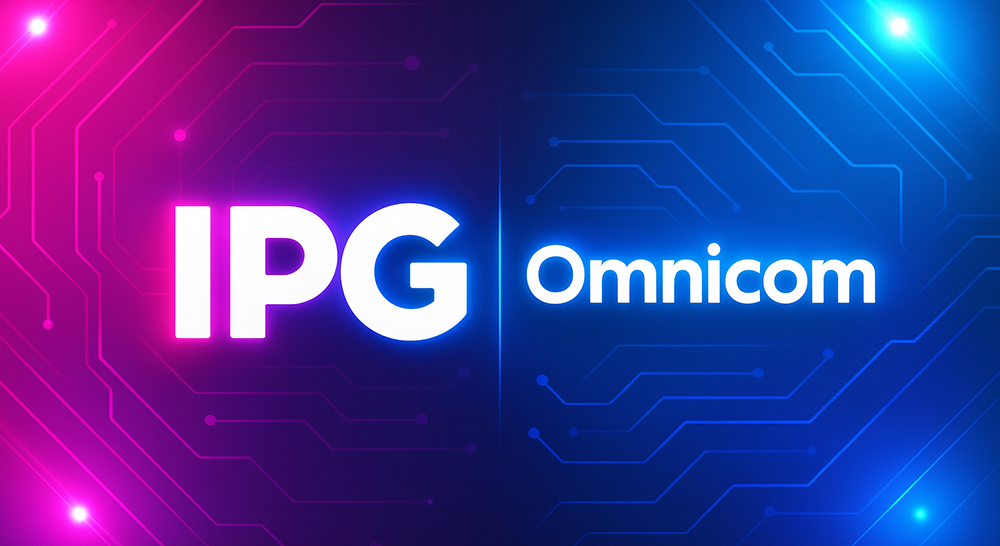The advertising world is witnessing a historic transformation as Omnicom Group’s $13.5 billion acquisition of Interpublic Group (IPG) gains Federal Trade Commission approval. This landmark merger unites two global giants, combining unparalleled creative talent, technological prowess, and client reach. Poised to become the world’s largest advertising agency, the union promises to redefine industry dynamics, reshape global campaigns, and set new benchmarks for scale, innovation, and strategic influence in marketing.

Omnicom and IPG have been arch-nemesis titans for decades, their agencies’ work creating some of the most iconic campaigns of our time. BBDO, DDB, TBWA, McCann, and FCB, names that evoke creativity and brand narratives, now belong to one corporate roof, forming what will be the largest advertising holding company in history. This merger is more than a simple combination of assets; it is a deliberate orchestration of scale, reach, and strategic capability, designed to position the new entity as a dominant force in a market increasingly defined by data-driven decision-making, technological innovation, and the rapid pace of media fragmentation. With more than 100,000 staff spread throughout over 70 nations, the scale of the operation is mind-boggling, offering clients unparalleled access to global markets and resources.
The Federal Trade Commission’s blessing, although contentious, included certain conditions meant to safeguard competition and ensure fair practice. Regulatory attention has surfaced in the advertising industry, especially in regards to fears that a combined company of this magnitude would be able to use its size to control prices, restrict opportunities for smaller competitors, or manipulate the allocation of advertising spend based on content bias. The FTC’s consent order guarantees the new merged company will not make coordinated decisions that steer advertising away from publishers on the basis of political or ideological grounds, with the exception of being expressly directed by clients. A monitor of compliance will be responsible for ensuring obedience with these provisions over a period of five years, which captures both the magnitude of the merger and the potential market effect of such concentration. This regulatory structure emphasises the fine line that has to be walked between growth and equity, and the duties that go with unparalleled market dominance.
For the advertising business, the ramifications of this merger are far-reaching. The coming together of Omnicom and IPG’s strengths presents their clients with a degree of integrated service that is without equal. Multinational companies with ambitions to run global campaigns can now tap a vast universe of creative resources, media buying scale, analytics, and technological capabilities through a single organisation. Having the capabilities to orchestrate across continents, tap proprietary insight, and combine artificial intelligence and programmatic solutions is a game-changing potential for how brands reach audiences. For the client, it might result in more coherent messaging, more efficient campaign management, and a chance to leverage the collective experience of some of the most awarded creative minds in the industry.
But with the benefits come questions and challenges. Consolidation on this scale always raises issues around competition and innovation. Smaller agencies, which have long relied on nimbleness, specialisation, and individualised client relationships, might have to operate in a market with a single global giant at the helm. And then there is the matter of culture; Omnicom and IPG each have different kinds of organisational architecture, histories, and creativity approaches. Assembling these varied workforces and operating philosophies into a unified entity is a Herculean undertaking, demanding sensitive management to prevent disruption and maintain the innovative vitality that has been the defining characteristic of both companies. How leadership reconciles efficiency with the retention of agency identity, creativity, and employee morale will be closely monitored by industry observers and stakeholders alike.
The economic rationale for the merger is strong. Advertising as an industry has been under siege due to the precipitous growth of digital media, the march towards programmatic advertising, and the increasing need for data insights. Scale offers a premium in dealing with media buys, technology spend, and riding out volatility in the marketplace. By consolidating, Omnicom and IPG are positioning themselves to leverage economies of scale, consolidate technological resources, and provide a more robust menu of services to clients. Investors have reacted positively, seeing the merger as a strategic move to build market share, expand service offerings, and achieve long-term growth in an industry growing more global in competition and digital in innovation.
The cultural footprint of this merger cannot be overstated. Advertising is never just a business; it’s an extension of society, culture, and consumer behaviour. Agencies such as BBDO, McCann, and DDB have long been responsible for shaping popular culture, framing public discourse, and developing campaigns into shared memory. The creation of a super-agency merging these creative giants is both a promise and a threat. On the one hand, the integration has the potential to spark a new era of innovative campaigns, deploying collective creative and technological powers to challenge the status quo. On the other, the danger of homogenisation, bureaucratic resistance, or watered-down creative identity is real, especially in an ecosystem where size at times crushes experimentation and agility.
The other important aspect is technological innovation. The contemporary advertising landscape is further dominated by data analytics, artificial intelligence, and automation. Omnicom and IPG have invested heavily in proprietary technologies that enable precise audience targeting, performance tracking, and predictive analytics. Combining these assets could accelerate the adoption of AI-driven creative processes, more sophisticated programmatic media buying, and integrated cross-platform campaigns that blur the lines between digital, social, and traditional media. The combined business has the potential to set new standards in advertising, delivering clients insights and efficiencies hitherto unobtainable. But merging intricate technological infrastructure poses operational challenges, especially in synchronising systems, data privacy levels, and analytics approaches within a global organisation.
Staff views provide another interpretation of the merger’s effect. To thousands of creative professionals, strategists, planners, and technologists, this consolidation is both chance and risk. Chances come in the guise of increased resources, career mobility across a global platform, and access to larger projects. Risk comes from possible redundancies, changes in corporate culture, and the difficulty of preserving creative freedom within a super-agency framework. Keeping hold of the best people and merging different teams will be essential to the success of the merger, as the human factor is still at the core of creative innovation.
Market watchers also sense the ripple impact on competitors. WPP, Publicis Groupe, and other large global holding companies are expected to review their plans in light of the creation of a behemoth Omnicom-IPG entity. Competitive dynamics may change, with competitors investigating mergers, acquisitions, or strategic alliances to preserve parity in scale, technological prowess, and global reach. Smaller and medium-sized agencies might have to differentiate by hyper-specialisation, niche expertise, or imaginative approaches that make the most of the adaptability that large organisations might struggle to achieve.
The merger also has other implications for clients and the market. Global brands now more frequently require cohesive solutions that cut across markets and channels. Having the power to bring creative, media buying, analytics, and technology into one building makes coordination easier and arguably more efficient. Concerns regarding concentration and price power are legitimate, though, with stakeholders wondering if lesser competition might affect cost structures or constrain choices for brands looking for diverse thinking. Transparency, integrity, and responsiveness to clients’ needs will be under close examination as the combined company starts operating at full scale.
Traditionally, advertising has progressed in waves of consolidation, technological revolution, and cultural change. The Omnicom-IPG merger reflects a culmination of these trends, fusing strategic size with creative superiority and technological capacity. The union is representative of a period in which agencies are no longer service bureaus, but rather strategic allies, with the ability to shape markets, create narratives, and drive business results through innovative, data-enabled campaigns. Here, the merged entity is not just reacting to prevailing market realities; it is explicitly setting the terms for what a global advertising colossus can and ought to be in the 21st century.
As the merger moves from regulatory approval to operational integration, the sector will hold its breath. Culture, strategy, technology, and client service questions will be asked in boardrooms, creative studios, and media planning departments across the globe. The potential for innovation is gigantic, as are the dangers of scale, complexity, and market concentration. Stakeholders—ranging from global clients to free creative talent—will have to work through a new environment characterised by unprecedented reach, capability, and impact.
In the end, Omnicom-IPG’s merger is a corporate deal but also a milestone moment in the annals of advertising history. It is the convergence of creativity, commerce, technology, and strategy at historic scale. The world’s biggest advertising agency is a reality, and with that comes the hope of game-changing campaigns, global integration, and breakthrough strategies that may raise the bar for the business. Along with it, however, is the burden to ensure competitive fairness, uphold creative diversity, and encourage an innovative culture, which is greater than ever. How Omnicom and IPG find this balance will not only define their future, but the future of the global advertising industry as a whole.
In a world where brands fight not only for market share but for cultural citizenship, relevance, attention, and engagement, the stakes have never been higher. The Omnicom-IPG merger is thus poised to reset the rules of the game, drawing on unparalleled resources, creative capital, and technology acumen in order to shape consumer perception and behaviour globally. As campaigns roll out across continents, as media strategies intertwine with data analytics and AI-driven insights, and as audiences encounter messaging shaped by the combined creative force of two advertising giants, the industry will experience a transformation as profound as any seen in its century-long evolution.
Whilst the merger brings to a close one chapter in advertising’s history, it opens another—a chapter characterised by size, creativity, and global impact. It provokes competitors, inspires clients, and fascinates consumers, setting the stage for a new story in which creativity, strategy, and technology come together in new and unprecedented forms. As Omnicom and IPG combine into one company, the world will look on, advertisers will evolve, and the face of global communications will never be the same again. This is the beginning of a new era in advertising, and it is set to leave an enduring mark on the business, culture, and society as a whole.
Discover more from Creative Brands
Subscribe to get the latest posts sent to your email.





